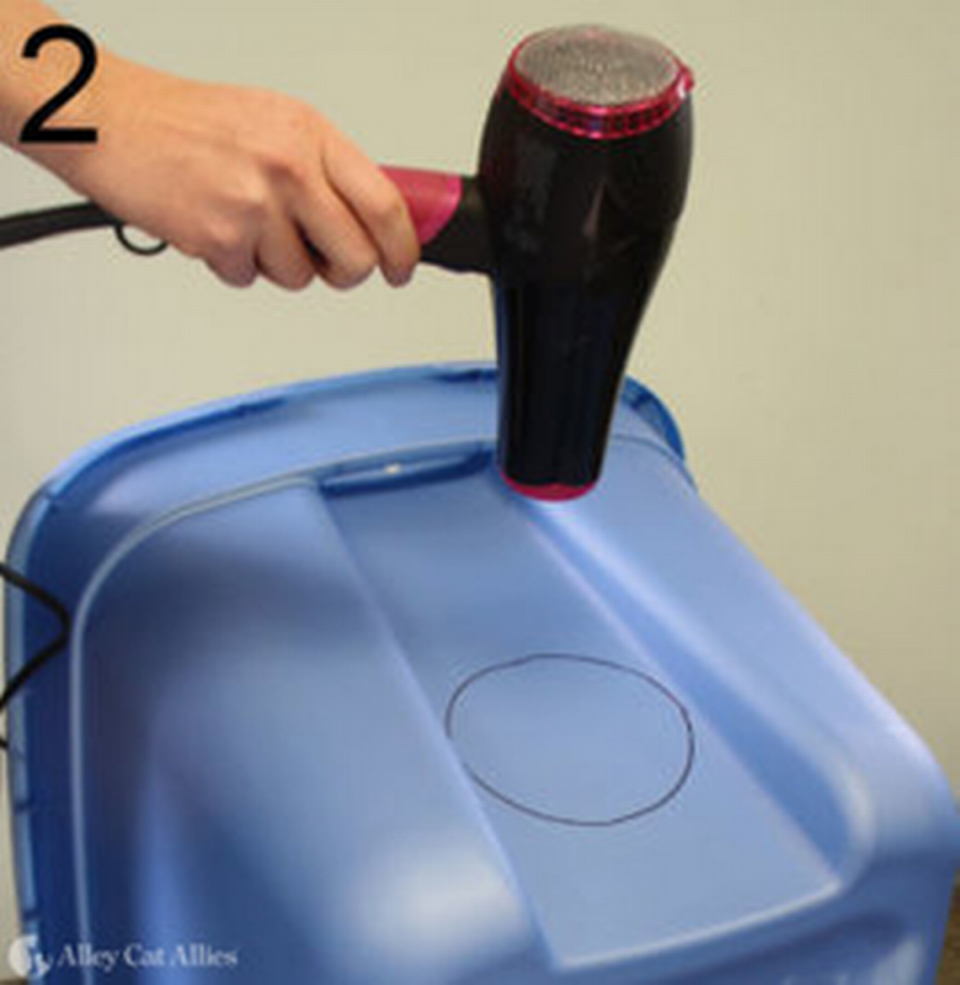Raleigh cat rescue offers these DIY tips for making warm shelters for outdoor kitties
The days are gradually getting longer and warmer, but winter isn’t over yet. We’re likely to have a few more nights when the unhoused need a safe place to stay out of the cold.
That goes for animals as well as people.
A Raleigh cat rescue group that wants feral felines to have warm, secure places to sleep held a Community Cat Bin Class on Saturday where more than 20 people learned how to quickly turn a plastic storage bin into a cozy cat house.
SAFE Haven for Cats off Durant Road sold tickets to the event to help cover the costs and hastened the process by pre-cutting some of the materials. But even without the advance work, this project can be done in an hour, not counting the trip to Lowe’s or Home Depot to buy the box, insulation and straw padding.
Avery Gunther, outreach coordinator for SAFE Haven, led the workshop, which drew people from a wide area who work with cat rescues or trap-neuter-release efforts, or who live in places where feral cats are common.
In some places, Gunther said, feral cats will try to shelter on people’s porches, leaving fur and dander on their outdoor furniture.
“If you don’t want cats on your furniture, give them some furniture of their own,” Gunther said.
Saturday’s class worked with 20-gallon totes, big enough to house one or two adult cats, but Gunther said the technique is easily scalable to larger containers where three or four friendly cats could share space.
Laura Lee of Franklinton said she wanted to learn to build the shelters because she has four feral cats that have taken up residence outside her house; she sees them sometimes on her doorbell camera. She said she also works with a local cat rescue and would teach other volunteers there to build the shelters, and would show her mom, who works with a feline rescue in Charlotte.
Here are instructions for building a Cat Bin the way SAFE Haven did it. There are other variations online using different types of insulation.
We’re aware that some people object to feeding and caring for feral cats because some of them kill wild birds. So treat this like a recipe for Brunswick Stew; if you don’t like Brunswick Stew, don’t make any, but also don’t enumerate to the cookbook author all the reasons why.
What you’ll need to make an outdoor cat shelter:
▪ Plastic tote with locking lid, in a color that blends into its environment
▪ Quarter- or half-inch sheet foam insulation
▪ Plastic liner used for potting plants, 6” in diameter
▪ Duct tape
▪ Box cutter, tape measure, permanent marker, hair dryer
▪ Clean straw (not hay, which holds moisture)
Instructions:
▪ Create an opening for the cat on one side of the tote by tracing around the top of the flower pot liner in a spot 3 to 4 inches from the ground and a couple of inches from the side. Tip: warm the spot with a hair dryer to soften the plastic for ease of cutting.

▪ Measure the foam box and cut a fifth piece of foam to set on top of it. This piece doesn’t need to be taped down.

▪ Set the foam box into the tote and trace the circular opening onto one “wall” of the foam. Cut out the hole.
▪ Cut off the bottom inch of the flower pot liner, creating a tube, and slide that through the box and the foam. Tape the liner securely. Tip: Take strips of duct tape and make snips half the width of the tape along one edge every inch or two. Wrap the tape around the flower pot liner with the snipped edge on the tote. This will form tabs that flare out to accommodate the curve. Repeat on the inside of the tote.

▪ Fill at a quarter- to half-full with straw. It will compact as it gets used. Set the foam piece on top, then attach the lid.

▪ If the bin will be placed on public property, consider marking it “Cat Shelter” to prevent tampering.
Adopt a cat or donate to SAFE Haven
Learn more about SAFE Haven for Cats in Raleigh at safehavenforcats.org.
Should we add a Category 6 to the hurricane scale? Why scientists say we need it
2024 will bring a total solar eclipse. Here’s how it will look across North Carolina

